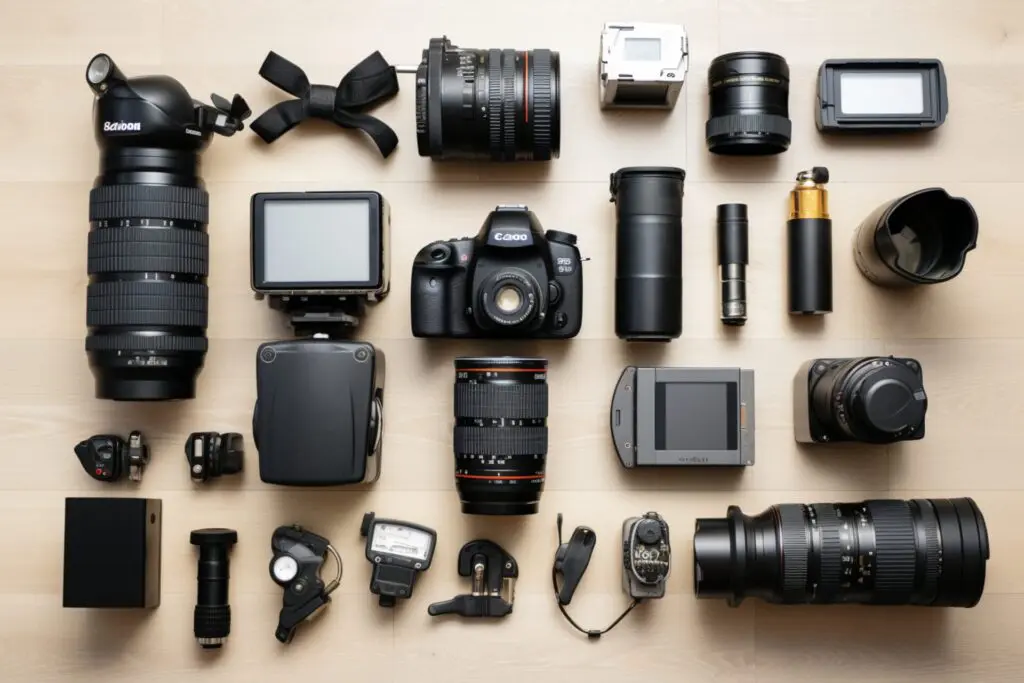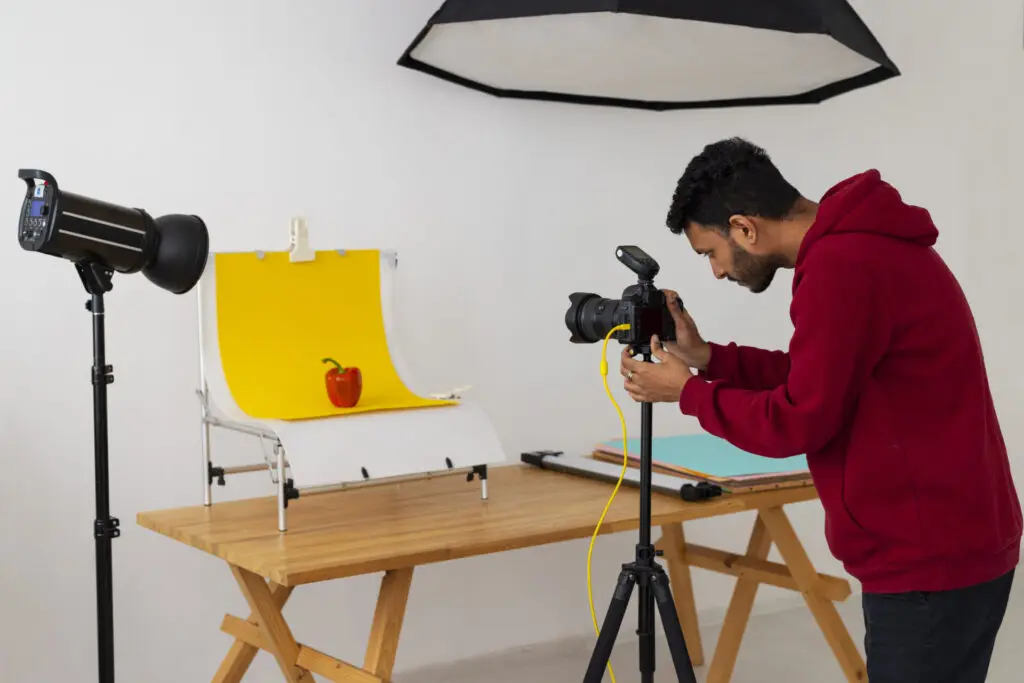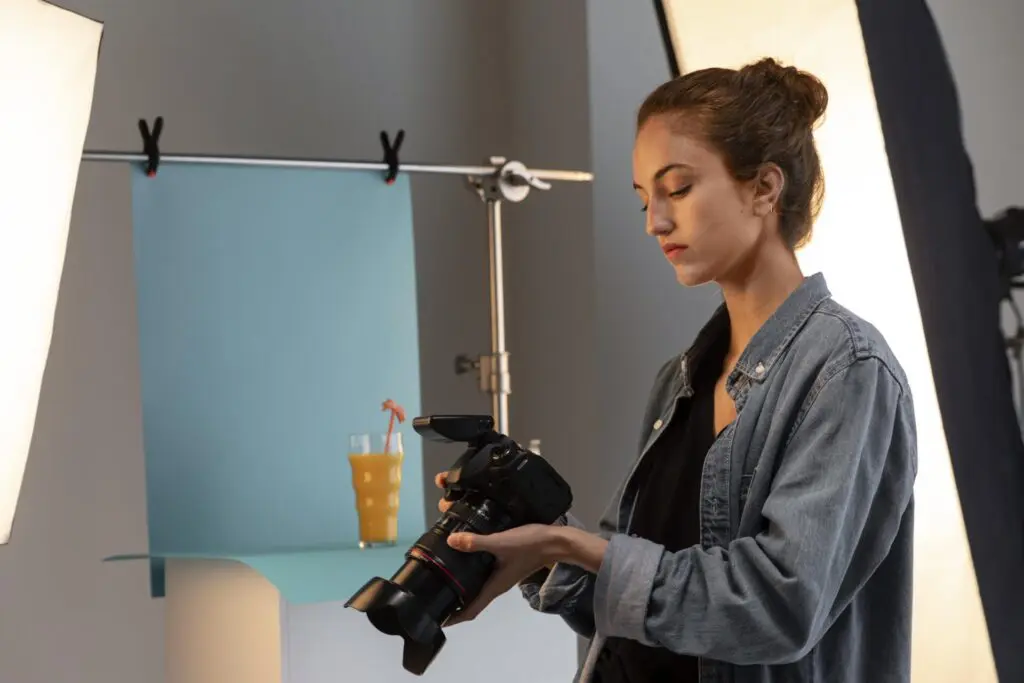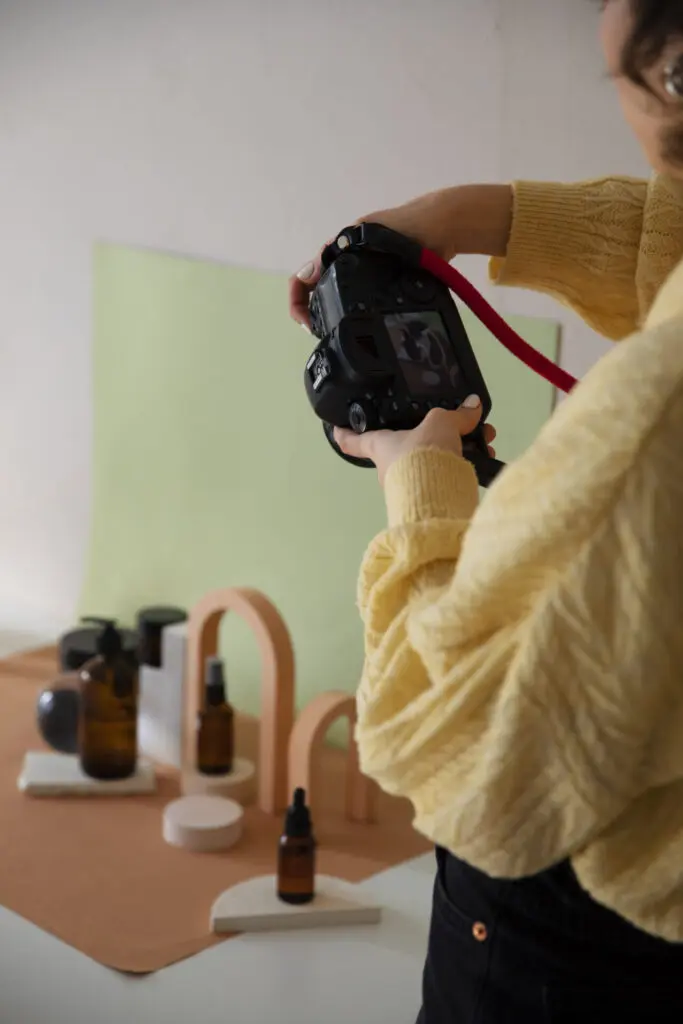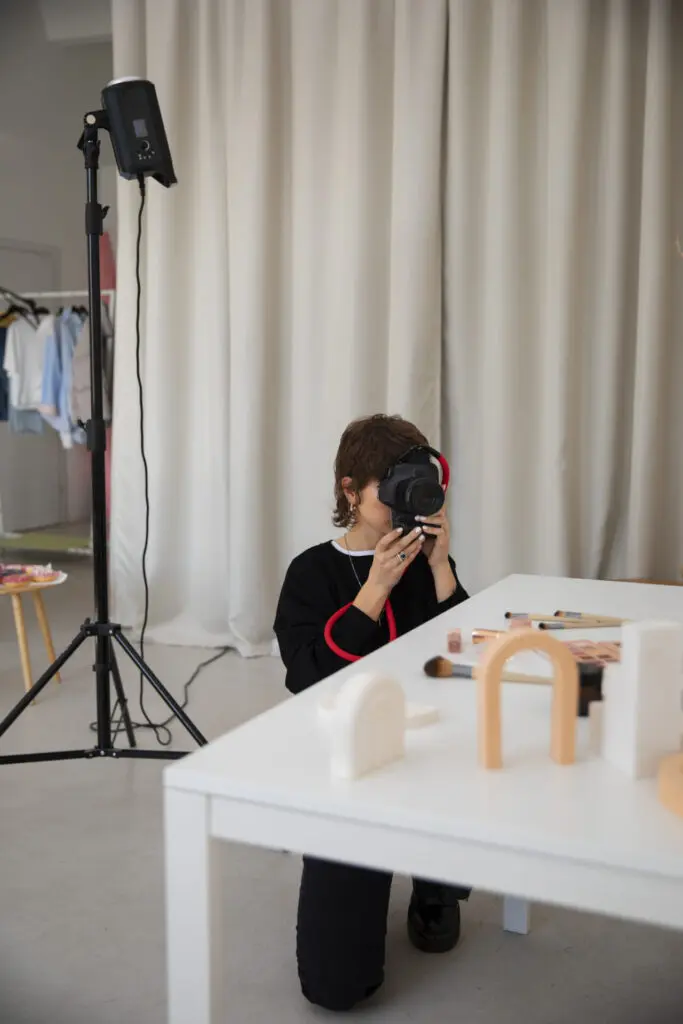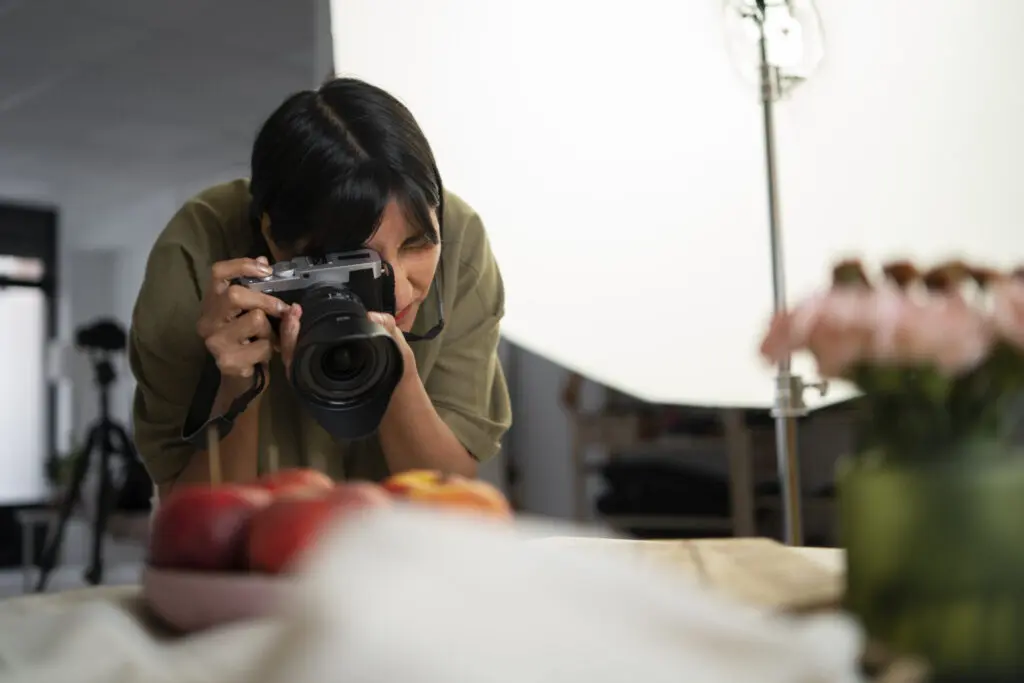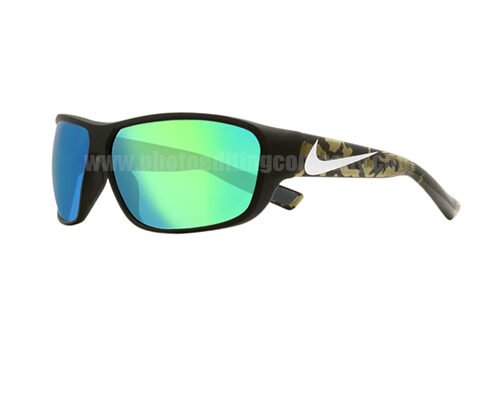In this article, we'll explore why website design is a pivotal factor in achieving success.…

How To Edit Product Images
Editing product images is a crucial step in creating compelling visuals for your ecommerce business. Better product photos can attract more customers and increase sales. This guide will give you important tips for editing product images to make them look better and get more people to buy.
Why Product Photography is Important
Before we dive into editing techniques, it’s essential to understand why product photography is crucial for e-commerce success. In a brick-and-mortar store, customers can physically see and touch the product before purchasing. In e-commerce, the only way for customers to experience the product is through images.
This is why high-quality product images are essential for e-commerce businesses. It helps customers see the product accurately, trust the seller, and make them more likely to buy.
The Role of Visual Appeal in Online Shopping
Online shoppers are drawn to visually appealing product images. Pictures help show how good the product is and how much people want it. They are very important when deciding what to buy. A nice picture of a product can make people interested in buying it online.
Building Brand Identity with Consistent Imagery
Maintaining a consistent look and feel across all product images helps to build a strong brand identity. Keeping the same lighting, backgrounds, and style in your photos helps customers remember your brand easily. This can make them want to come back and buy from you again.
Enhancing User Experience with High-Quality Images
Good product photography enhances the user experience on your website. Clear, zoomable images that load fast help customers look at products closely, like they would in a store. This makes online shopping better.
Tips for Capturing High-Quality Product Images
Invest in Equipment
To capture high-quality product images, you’ll need the right equipment. A good camera, tripod, and lighting equipment are essential for achieving professional-looking images. Smartphones take good pictures but DSLR cameras give you more control.
Selecting the Right Background
Choosing the right background for product photos is very important. A plain background helps keep attention on the product. Some photographers like using a white or light grey background because it’s easy to edit out and can be used in many ways.
Framing and Composition
Good framing and composition make product images look nice. Using the rule of thirds, leading lines, and symmetry helps make compositions that grab people’s attention.
Use Natural Lighting
Lighting is critical when it comes to product photography. It’s best to avoid harsh artificial lighting as it can create unflattering shadows and reflections. Instead, opt for natural light from a window or take your product outdoors for a photoshoot. This will give your images a soft and natural look.
Understanding Color Temperature
Understanding color temperature is important when using natural light. The color of light can change depending on the time of day and weather conditions, which can affect the appearance of your product. Aiming for a neutral color balance will ensure that your product’s colors are accurately represented.
Creating a Home Studio Setup
Creating a home studio doesn’t have to be expensive. You can make a special place for taking photos of products. You just need simple tools like a backdrop, reflectors, and continuous lighting. These help you control your shooting space and make sure your photos look the same.
Utilize Different Angles and Perspectives
To showcase your product fully, it’s important to take photos from different angles and perspectives. This will give customers a better understanding of the product’s size, shape, and features. Plus, it adds variety to your product images, making them more interesting to look at.
Highlighting Unique Features
When photographing your product, make sure to highlight its unique features and selling points. Close-up photos and different views can help customers see special details. This could persuade them to choose your product over a competitor’s.
Including Props and Contextual Imagery
Using props and contextual imagery can help customers visualize the product in use. This kind of picture can show a story and make customers feel connected emotionally. It works well for products related to lifestyle.
Techniques to Edit Product Images
Now that you know the basics of taking good product photos, let’s talk about some editing tricks to make them even better.
Remove Background Distractions
Background removal is a popular editing technique in product photography. This technique removes the background from the product picture, showing only the product. This is often done to create a clean and professional-looking image that can be used on a white background.
Cropping for Composition and Impact
Cropping can be used to improve the composition of a photo after it’s been taken. By removing excess space or distractions, you can focus the viewer’s attention on the product. Cropping changes the shape of a picture to look better on different websites like social media or online stores. It can make the image stand out more.
Cleaning Up Imperfections
Even with a great camera, products can still have flaws that can only be seen in a really clear picture. Using tools like the clone stamp or healing brush, you can clean up these imperfections to present the most appealing version of your product.
Adjust Brightness and Contrast
Lighting can make or break a product image. If your picture is too dark or bright, you can change the brightness and contrast to make it look better. This can be done using photo editing software like Adobe Photoshop or Lightroom.
Ensuring Accurate Color Representation
Ensuring that the colors in your product images are accurate is crucial. Using the wrong color can make customers unhappy and they may want to return the product. With the color correction tools in your editing software, you can make the colors look like the real product.
Using Curves for Advanced Adjustments
Using the curves tool gives advanced editors more control over the brightness and contrast of a picture. Create points on the curve to adjust highlights, midtones, and shadows separately for a better appearance.
Enhance Colors
You can make your product images look better by changing the brightness, contrast, and colors. This is especially important for products with vivid colors that may not translate accurately in a photo. You can change the colors in your picture to make it stand out more by adjusting the saturation and vibrance levels.
Balancing Saturation and Vibrance
While enhancing colors, it’s important to understand the difference between saturation and vibrance. Saturation makes all colors look brighter, while vibrance only makes dull colors brighter. Balancing these two can lead to more natural and appealing color enhancements.
Adjusting White Balance for Consistency
Your camera’s white balance setting might not show the product’s true colors well, especially in different lighting. Changing the white balance in editing can make sure all your product photos have the same colors. This is important when you have lots of products in a row.
Add Reflections and Shadows
Adding reflections and shadows to your product images can make them look more realistic and professional. This technique is commonly used in fashion and jewelry photography, as it adds depth and dimension to the product.
Creating Realistic Shadows
Shadows add a sense of depth and grounding to product images. With editing software, you can make shadows that look real and match the lighting in your photo. This detail can make the product appear more tangible to customers.
Simulating Reflections for a Premium Feel
Reflections can give a polished, high-end look to product images, particularly with items like electronics, watches, or glassware. To make a soft reflection, use layers and opacity carefully so it looks real and not too much.
Fine-Tuning Details with Dodge and Burn
The dodge and burn tools can be used to subtly highlight or darken specific areas of a product image. This can bring out details, add dimension, or correct uneven lighting. It’s a powerful technique but should be used sparingly to maintain a natural look.
Utilizing Technology for Efficient Editing
With the rise of ecommerce, there has been an influx of product editing software available on the market. These tools are designed to make the editing process faster, easier, and more efficient. Some popular options include Adobe Photoshop, Lightroom, and Canva.
Exploring Automated Editing Solutions
There are tools that can make editing faster. These tools can make pictures look better without needing much help from you. They use special patterns and learning to make changes to the colors and remove backgrounds.
Streamlining Workflow with Presets and Actions
To save time and ensure consistency, you can use presets and actions in editing software. Presets are ready-made settings for quick changes to images. Actions are a series of edits that can be saved and used on many images.
Batch Processing for Large Product Catalogs
For businesses with large product catalogs, batch processing is a lifesaver. With this feature, you can make the same changes to many pictures all together. This makes sure all your product photos look the same and saves you a lot of time from editing each one individually.
Conclusion
In the online shopping world, it’s important to have good pictures of products that catch people’s eye and make them want to buy. To make your product photos better and sell more, use the right equipment, take good pictures, and edit them well. For exceptional results, consider using a professional photo editing service like Photo Editing Company.
Keeping Edits Subtle and Product-Focused
Make sure to make small changes to your product and stay true to its original essence. Don’t hesitate to try out different methods to see what suits your brand the most. Over-editing images can make customers unhappy because they may not see the product correctly.
Embracing Continuous Learning and Improvement
Photography and editing are skills that improve with practice. Make sure you know about the newest trends, software updates, and techniques to make your product images better. Utilizing services like Photo Editing Company can help keep your images fresh and up-to-date.
Leveraging Quality Images for Marketing Success
Quality product images are not only essential for your ecommerce site; they are also powerful tools for marketing. Improving pictures for social media, emails, and ads can increase your store’s popularity and bring in more customers. With the right tools and skills, and support from Photo Editing Company, you can take your product images to the next level and stand out in the crowded ecommerce market.




